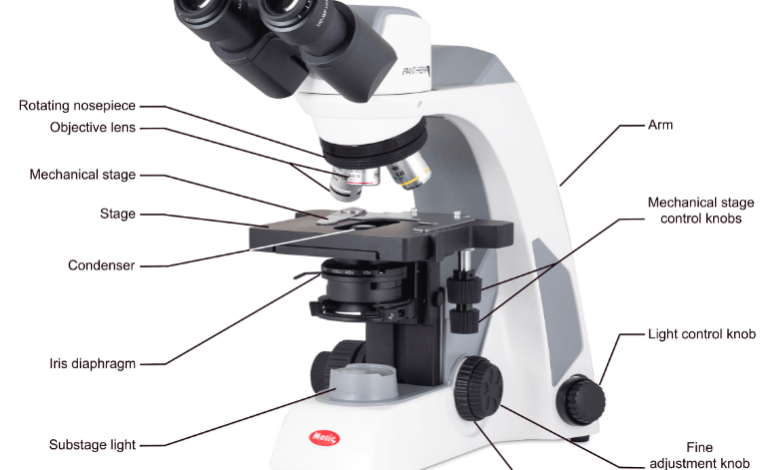Diagram:Anho9uz3aos= Microscope Labeled

The diagram labeled ‘Anho9uz3aos’ serves as a comprehensive resource for understanding the intricate components of a microscope. By clearly outlining the functions of key elements such as the eyepiece, objective lenses, and illumination system, it provides invaluable insights for both students and researchers engaged in specimen examination. However, the nuances of effective microscope utilization extend beyond mere identification of parts; they encompass best practices and maintenance strategies that can significantly influence observational outcomes. What implications might these insights have for enhancing scientific rigor?
Overview of Microscope Components
Microscopes, essential tools in scientific research, consist of several key components that work together to magnify and resolve fine details of specimens.
Key elements include various lens types, objective lenses, and eyepiece variations, which enhance viewing capabilities.
Stage adjustments allow precise positioning of samples, while illumination sources ensure optimal light.
Regular microscope maintenance is crucial for sustaining performance and achieving accurate results.
Read more: Desktop:Gofraauqope= Computer
Functions of Each Part
Understanding the functions of each component enhances the appreciation of how microscopes operate to provide detailed visual analysis of specimens.
The lens adjustment allows for precise focusing, enabling users to clarify the image of the specimen.
Meanwhile, stage control facilitates the movement of the slide, ensuring that the area of interest is positioned correctly under the lens for optimal viewing.
Tips for Using a Microscope
To achieve optimal results when using a microscope, it is essential to ensure that the specimen is properly prepared and positioned for examination.
Regular microscope maintenance is crucial to ensure functionality.
Additionally, utilizing proper lighting enhances visibility and detail, allowing for a clearer view of the specimen.
Familiarize yourself with the microscope’s settings for best results and an engaging experience.
Read more: Design:Tsxa2jmgp98= Flower
Conclusion
In conclusion, the anatomy of the microscope, as illustrated in the diagram ‘Anho9uz3aos’, juxtaposes complexity with clarity.
Each component, from the eyepiece to the illumination system, plays a vital role in the art of specimen examination.
Understanding these parts not only enhances operational proficiency but also underscores the significance of meticulous maintenance and preparation.
Thus, the mastery of this intricate instrument transforms the microscopic world into a realm of discovery, bridging the gap between observation and insight.




